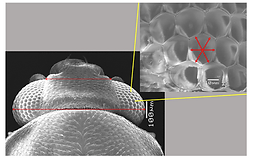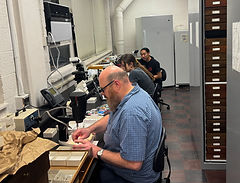
Research


Taxonomy & Systematics
Taxonomy and systematics are the disciplines focused on the naming and classifying of life. Our lab does both alpha-level taxonomy: the description of new species, and higher-level systematics: providing classifications for lineages from genera to superfamilies. While the majority of this work takes place within the largest lineage of described life, the order Coleoptera, we are excited to study any group of insects.
Phylogenetics & Divergence Time
One of the most powerful tools we use in the lab is phylogenomics. With a robust phylogeny, we can test hypotheses, uncover patterns of evolution, and provide frameworks on which to build classifications. We also strive to perform these analyses within the context of time. Divergence time estimation allows us to place a specific phylogenetic split, origin of a character, or ecological shift within a specific geologic time period.


Feeding Ecology & Trait Evolution
Many of our questions surround the impact of feeding shifts or trait evolution on diversification of a lineage. We incorporate both novel behavioral data and data from museum specimen labels to estimate feeding ecology across our phylogenies. Our goal is to identify specific shifts or traits that might have sparked radiations of insects.
Faunistics & Biodiversity
Before we can perform much of the large-scale phylogenomic and evolutionary research that makes up a large portion of the lab, we must complete basic faunistic and biodiversity studies to understand what taxa are present in areas. What groups are represented in a given community, and what are the ranges of these species.


Museum Work
Much of the data generated in the lab, from morphological measurements, to host records, to genomic DNA, come from natural history collections. Natural history collections serve as the biological libraries for the world around us, they are a precious resource that must be preserved. We are constantly using our museum specimens for novel types of data collection – there is no telling what additional value we can
get out of these libraries in the future.
Field Work
While museums are invaluable resources, they don’t contain everything, and new discoveries are always being made in the field. Our lab has been very fortunate to get the opportunity to do fieldwork in various amazing places, building collaborations and friendships that will last a lifetime. We are currently focusing these efforts on collecting spectral data for bioluminescent beetles, new host records for phytophagous and fungivorous groups, and
fresh material for high-quality genomics.



